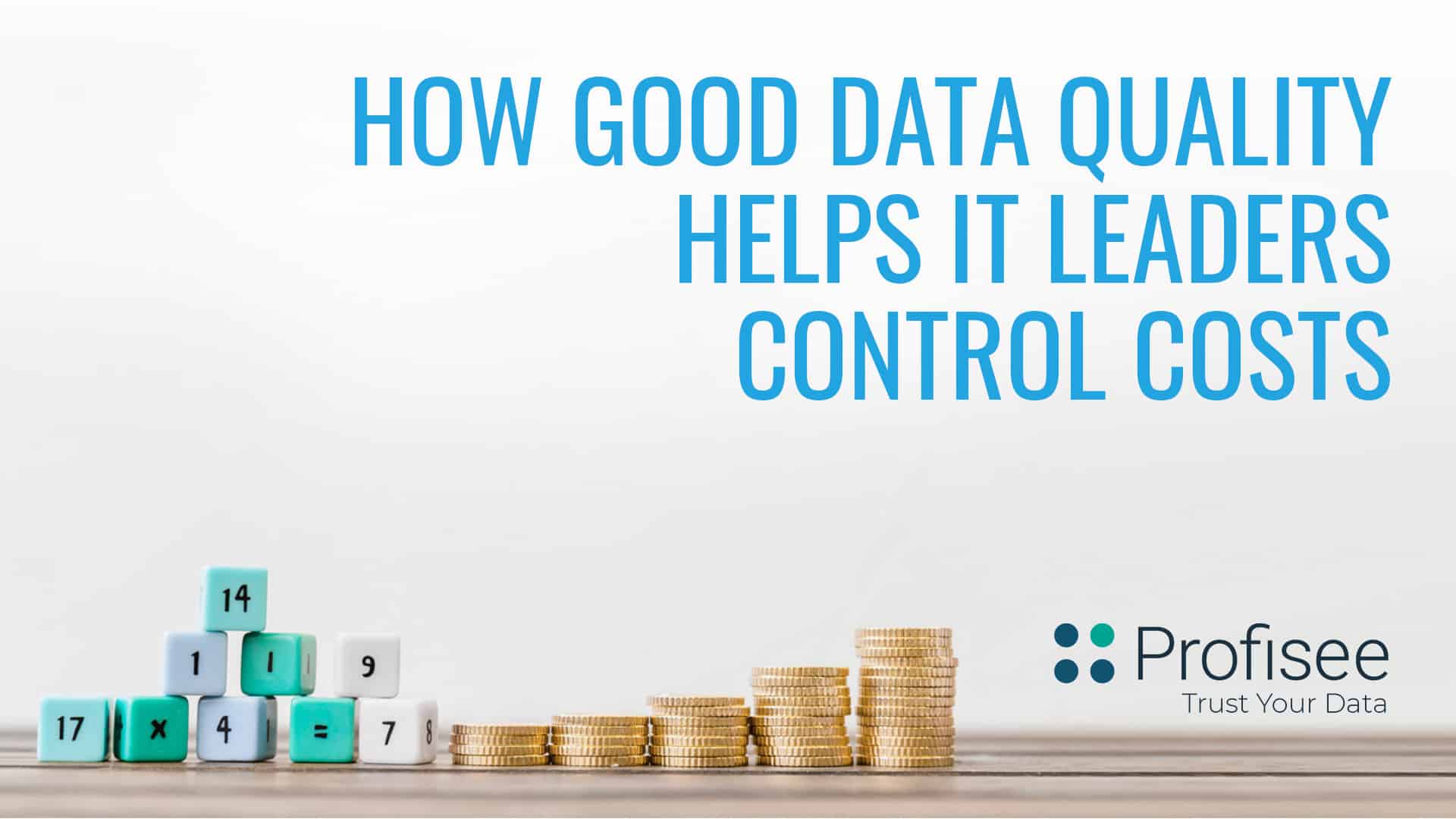The costs of storing that data have never been lower but there are plenty of other costs in the enterprise that can benefit from use of at least some of that data. That is, as long as the data being called into service is consistent and accurate.
Not all data in the company servers is ready for use, so relying on results derived from it can easily go awry and end up increasing costs. According to Gartner, “Leading information-driven organizations proactively measure the value of their information assets, as well as the cost of poor quality data and the value of good quality data.”
According to 451 Research, high quality data enables organizations to complete projects correctly on their first attempts. It enables them to operate more efficiently and complete the projects they take on. The reverse is true when data is unreliable — projects are delayed or restarted, costing more money and slowing business growth. The company also found that 60 percent of executives don’t have confidence in the validity of their data quality but consider bad data to be better than no data as they approach deadlines.
IT leaders can find innovative uses for the data they manage once they’ve verified its accuracy and cleaned it of errors. Here are five suggestions for ways IT leaders can use good data quality to control costs in the enterprise.
Back-Office Improvements
Accurate synchronized data can make tasks like billing and even mailing less expensive by eliminating duplication of efforts and lowering the costs of dealing with miss-addressing. Accurate data can help to retain customers and encourage continued business by accurately responding to requests for information, delivering promotions that match their interests, and making decisions that support their previous purchases. Thomas C. Redman as quoted in database trends and applications says, “on average, payroll record changes have a 1% error rate, billing records have a 2%-to-7% error rate, and the error rate for credit records is as high as 30%.” That level of error can have disastrous consequences on financial operations and overall company performance.
Reduced Operating Costs
It’s expensive to maintain multiple sources of data and then try to reconcile differences every time a report needs to be generated. Accurate managed data provides a single reliable reference that reconciles the multiple sources of data into a resource that can be relied upon for its accuracy. That lets multiple business units operate on the same set of information so they don’t have to cross-check each other to make certain their assumptions and actions match the reality of the data they use.
More Effective Cross-Selling and Up-Selling
Marketing relies on accurate data to measure the effectiveness of its promotional efforts and to better understand what customers want. Unreliable data can lead to ineffective assumptions about customer preferences, missed opportunities, inaccurate sales volume prediction, and manufacturing wrong, less than needed, or more than needed – all of which mean wasted time and spending. Accurate data can let marketing better understand its efforts’ effectiveness and reduce expenses.
Improved Regulatory/Compliance Efforts
Bad data can cause miscalculations and lead to expensive remedies when it comes to reporting and compliance. Inaccurate financial reporting can leave money on the table or can lead to false tax reporting, inaccurate valuation of company worth, and shareholder unrest. Some of these results can lead to poor financial performance and loss of confidence while misreporting to governmental agencies can be more costly than can be measured in dollars. Unreconciled data means reporting by guessing which data is right. It’s the IT leader’s responsibility to assure the company is delivering its findings based on data it trusts to be accurate.
Research and Development
Industries that depend on research and development spend significant amounts of money finding solutions. As an example, healthcare generates plenty of data and spends large sums on research. McKinsey & Company reported that as early as 2013 healthcare was estimated to save between 12 and 17 percent of its costs by exploiting big data that had been properly managed. The results were estimated to save the healthcare industry between $348 and $493 billion in 2013 dollars.
Every company in every industry now has opportunities to collect and use large amounts of data. When that data is accurate and consistent it can be used to increase productivity and simultaneously lower costs. The IT leader needs to lead the efforts to improve the quality of the company’s data and help business units discover ways to leverage it.
Interested in learning more? Download a copy of the Complete Guide to Customer 360 below.

Forrest Brown
Forrest Brown is the Content Marketing Manager at Profisee and has been writing about B2B tech for eight years, spanning software categories like project management, enterprise resource planning (ERP) and now master data management (MDM). When he's not at work, Forrest enjoys playing music, writing and exploring the Atlanta food scene.











